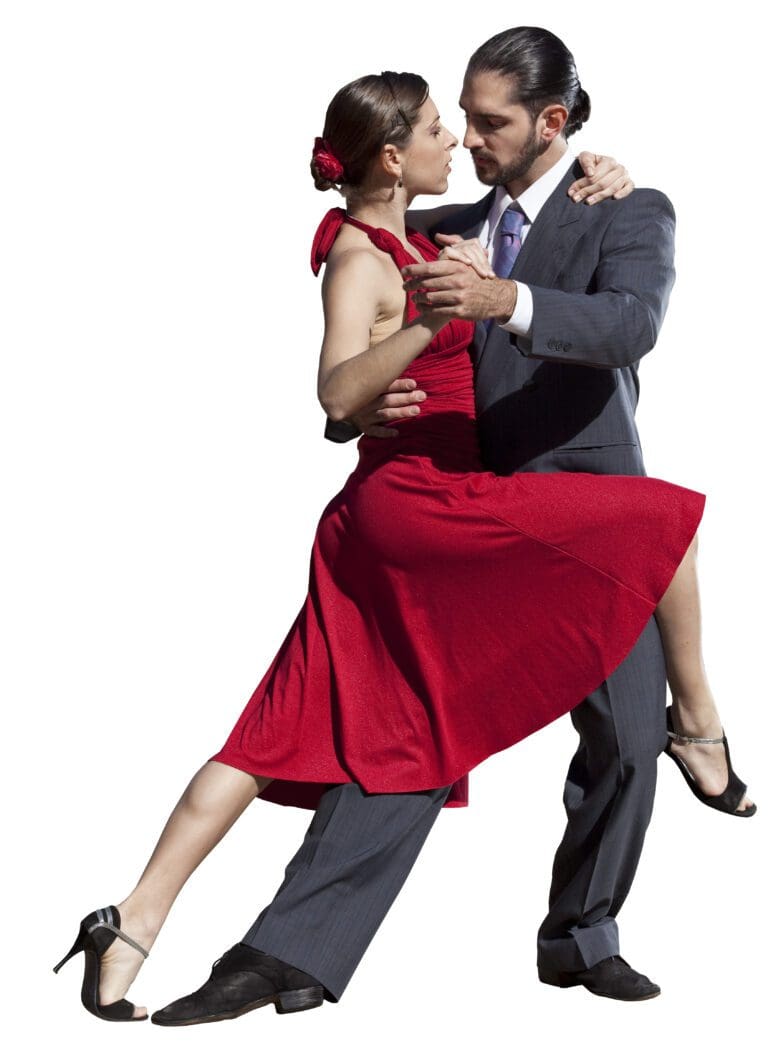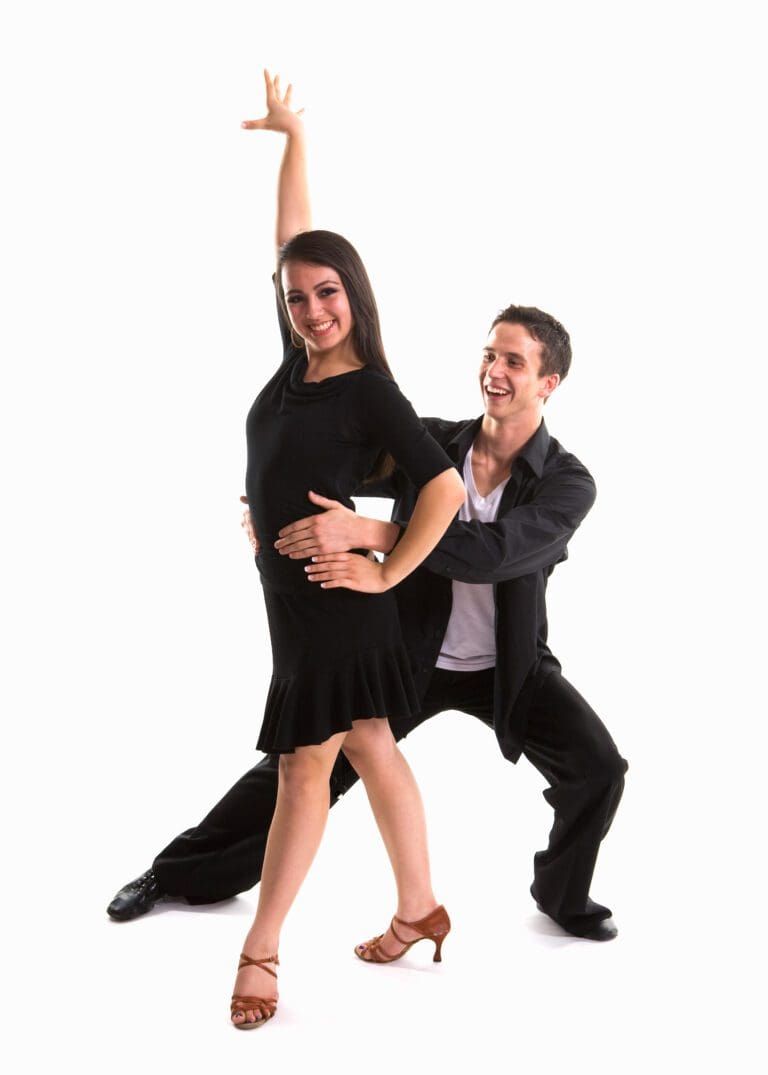Learning Ballroom, Latin, or Swing dance styles can be a fun and rewarding experience? Not only will you gain valuable social dance skills that will last a lifetime, but you’ll also feel confident and at ease in any setting where there’s music and social dancing involved. passion!
Welcome to the world of ballroom dancing! Whether you’re eager to compete or simply looking to socialize and stay active, mastering the three main styles – American Smooth, Swing, and Latin (Rhythm) – is an essential step. Luckily, we’re here to help guide you through every step of the way. Our comprehensive overview of ballroom dancing focuses on the American styles, offering invaluable tips and highlighting the unique characteristics and steps of each style.
It’s important to remember that ballroom dancing originated in the late 19th century as a formal and structured social dance. Today, it remains a beloved pastime all over the world that offers opportunities for exercise, socialization, and, of course, competition. From the classic Foxtrot and Waltz to the fun and upbeat Cha-Cha, there’s a ballroom dancing style out there for everyone.
So, come explore this fantastic form of dance with us! The smooth and fluid movements, coupled with jazz or swing music, provide a captivating experience. With iconic dances like the Waltz, Tango, Foxtrot, and Viennese Waltz, there’s nothing quite like the exhilarating styles of ballroom dancing. Join us on the dance floor as we delve into the world of ballroom dance.

Did you know that the Waltz has been around for over 400 years? It originated in Bavaria as a round dance called the ‘volte’. Even though it was introduced into formal English society in 1812, it had difficulties gaining acceptance because of the physical intimacy it involved. But eventually, it gained popularity and became a favorite dance in the US as early as 1840. The Waltz even went through changes, creating new tempos such as the medium and slow Waltz. Today, it continues to be a traditional, progressive dance that creates a smooth, lilting style with the use of sway. How cool is that?
Let’s chat about the fascinating Tango dance. It’s got such a romantic feel and a rich history. With its sophisticated patterns and staccato foot movements, Tango originated from an early Spanish folk dance called Milonga (although the true origins are uncertain). It was then modified by Argentine plainsmen at cafes in Buenos Aires, giving it a new name and style. Later on, the Cubans continued to dance Tango, changing it even more by introducing habanera rhythms. Tango finally gained widespread acceptance when it was reintroduced to Argentina from Paris. Today, Tango remains a highly stylized ballroom dance appreciated by many due to its drama and closeness with a partner. What do you think about Tango?
Did you know that the Foxtrot dance step was actually named after a vaudeville dancer and comedian named Harry Fox? He introduced the “slow step” in 1912 during the ragtime music era which marked the start of a new phase in ballroom dancing. Partners danced closer together and ad-libbed to new music. As the years went by, the introduction of “pop” songs changed the style of music, and dance began to incorporate the better attributes of older dances. Now, the Foxtrot dance is very popular in the international style and even became a hit in the 60s once techniques were implemented into the American style. A cool thing about this dance is that it can be compactly danced on average dance floors, so if you love to dance, be sure to give the Foxtrot a try!
Some of the most popular Latin (Rhythm) dance styles? Cha Cha, Rumba, Swing, and Salsa are not only high-energy and full of rhythm, but they’re also known for their sexy and passionate movements. The dynamic performances of these dances are sure to leave you in awe with their dramatic and abrupt moves. Although they’re not the most traditional form of ballroom dancing, Latin (Rhythm) ballroom dancing offers a thrilling and vibrant dance experience. So why not give it a try? Join us today and discover the joy of Latin dance by becoming part of a vibrant community of passionate dancers.
The Cha Cha is a super fun, upbeat dance that anyone can learn! You’ll be moving to a 4/4 beat and jiving to the melody in no time. Whether you want to dance slow and smooth or add some dramatic flair with staccato moves, the Cha Cha has got you covered! Start with the basics; two slow steps followed by three quick steps, and you’ll quickly get the hang of it. If you’re feeling adventurous, add your own spins and movements to really make the dance your own! With plenty of room for creativity and expression, every dancer can show off their unique style and have a blast on the dance floor. Trust us, the Cha Cha is a pleasure for all ages. So let’s get moving and have some fun!
Rumba is a popular dance in social settings and international competitions. The ballroom Rumba originated from the Cuban rhythm and dance Bolero-Son, and it was popularized by African slaves’ descendants during the pre-revolutionary period. Since the 1930s, the Rumba has remained a favorite social dance because of its tantalizing rhythm. The Rumba features a heavy walking step and a subtle hip motion. There are three styles of Rumba that were introduced to the United States; however, only Bolero-Rumba and Son-Rumba have remained popular over time. Rumba steps are compact, danced in place, and not danced with the same body contact as smooth-style dances. Nonetheless, the hips’ movement is a defining characteristic of the Rumba.
Swing dance is one of the most popular dance styles that originated in America during the roaring 20s and 30s? This dance style was born out of a fusion of jazz and big band music, and it quickly became a hit in pop culture. The Lindy Hop specifically emerged in New York, where dancers blended jazz music with new sounds to create this innovative dance style. It’s a quick and precise dance that requires intricate footwork that matches the music being played by the big bands. Although partner dancing lost its appeal in the 60s with the emergence of new dance styles, it made a comeback in the 80s in France as French Jive. Nowadays, Swing dance has found its way back into the hearts of social dancers all around the world, with Swing dance parties and events being hosted in the UK and USA.
Salsa, an exuberant and passionate dance form that has captured the hearts of passionate dancers and music lovers around the world, has a fascinating history that dates back to the early 1900s when Cuba was bustling with a vibrant cultural scene. A combination of Cuban Son and Afro-Cuban rumba, two existing styles of music, gave birth to this very unique and lively dance. The joyous rhythms, gyrating hips, and smooth footwork of Salsa quickly caught the attention of people outside of Cuba, and it soon made its way to the United States, where Cuban musicians inserted American Jazz into the dance. Perhaps the beauty of Salsa is not only in how it evolved but also how it transcends cultural differences to bring people together on the dance floor with its universal language of music and movement.
